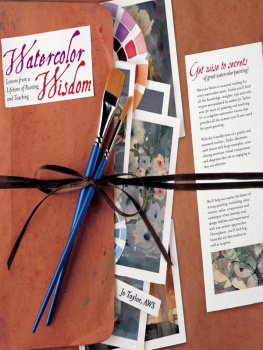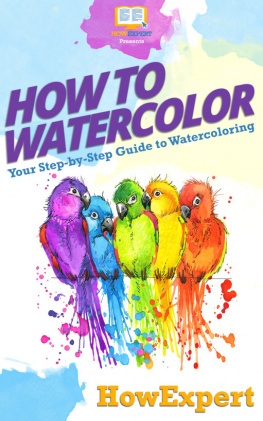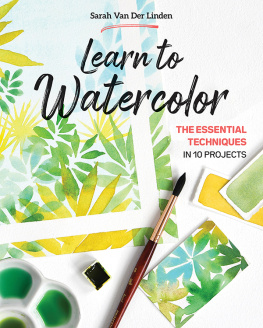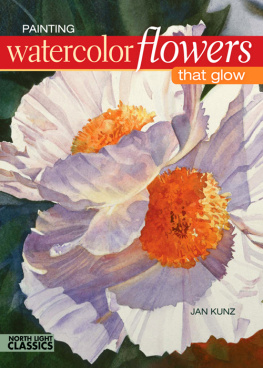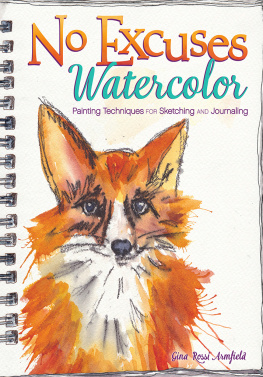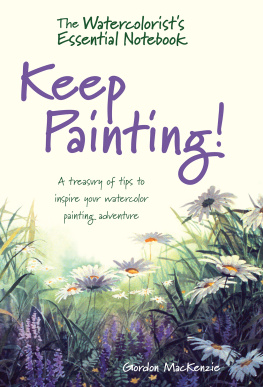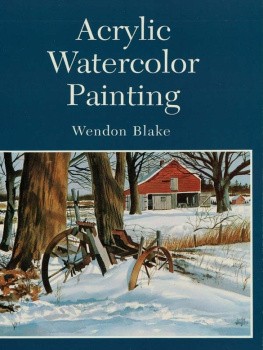Watercolor Painting: A Guide for Beginners
While every precaution has been taken in the preparation of this book, the publisher assumes no responsibility for errors or omissions, or for damages resulting from the use of the information contained herein.
WATERCOLOR PAINTING: A COMPLETE GUIDE ON HOW TO PAINT WITH PERFECT PAINTING TECHNIQUES
First edition. March 19, 2017.
Copyright 2017 Susan Miller.
Written by Susan Miller.
10 9 8 7 6 5 4 3 2 1
Introduction
Chapter 1: Starting Supplies
Your First Brushes
Watercolor Paints
Canvas and Paper
Pallets for Mixing
Water Containers
Household Materials
Chapter 2: Beginner Techniques
Wetting the Paper
Excess Water Fixes
Simple Spidering
Splatter Painting
Wax, Tape, & Fluid
Back of the Brush
Chapter 3: Basic Strokes
Flat Versus Round
Flat Side-Loading
Flat Jagged Strokes
Round Petal Strokes
Round Twist Stroke
Chapter 4: Color Theory
Blending Colors
Watercolor Opacity
Depth with Color
Warm versus Cool
The True Primaries
Chapter 5: Mixing Media
Conclusion
Introduction
W atercolors are one of the most accessible painting mediums for new artists. Their easily diluted and blended nature makes them incredibly affordable, and their popular styles are flexible and simple in nature, making them great for experimentation.
Well be going over how you can start gathering watercolor painting tools and learn the basic techniques associated with them. In later chapters, well discuss how these techniques can be combined with color theory and other art mediums to reach their full potential.
Rather than just providing you a broad technical overview, we will also be guiding you through these topics in a follow-along way, intended to build up your skills as a beginner artist in the most natural manner. This book should provide you enough of an introduction to feel confident in researching more advanced supplies and techniques upon completing it.
Chapter 1: Starting Supplies
I n order to start watercolor painting, you will need some basic supplies. The good thing is that the barrier for entry is fairly low. As a bare minimum, youll need one brush, watercolor paint in the primary colors (red, blue, and yellow), a container with water, and something to paint on. But lets go into more detail about what exactly you should be looking for when you go out shopping.
Your First Brushes
W hile painting brushes used to break the budget, there are many very affordable options nowadays. The number of options can be a bit overwhelming when youre first shopping around for them. Should you go for student or artist quality? Whats the difference between synthetic fiber and real hair brushes? Why are there so many different shapes? What do the numbers mean? Are there particular brands you should look for?
Stop. Breathe. Ok? Now, if youre just starting out, generic, synthetic fiber, student-quality brushes should be fine. These generally dont last as long as sable hair artist-quality brushes they shed their fibers, eventually lose their shape, and discolor pretty quickly but they wont break the bank and are perfect for testing the medium out. (Just in case, we should clarify that one thing to avoid is the childrens brush, meaning the colorful synthetic craft brushes some primary schools buy in bulk. Dont give in to the tempting price, as they just wont do what you need.)
As far as the shapes go, the two brushes we feel are best for starting out are a basic round brush and a flat angular brush. Round brushes are what most people think of when it comes to painting; their cylindrical base can hold and plenty of paint, while the tapered point can distribute it as widely or as detailed as you want. However, getting hard edges and lines with a round brush can be difficult and is why we also recommend getting a flat brush. A flat angular brush (diagonally tapered) will allow you to do detail work using in addition to those wide flat strokes without purchasing an additional detailing brush.
By the way, the numbers on painting brushes usually refer to their sizes. This varies between manufacturers, so youre better off doing your own research on this if theres a certain brand youre interested in. We generally recommend picking a brush size that makes sense for the size paintings youd like to create. Basically, dont buy huge brushes if youre working with postcard-sized canvases.
Watercolor Paints
T he next material you need to start painting is the actual paint. Like the brushes, off-brand, student-quality paints are fine for when youre starting out on a budget, but you want to avoid anything especially cheap. Some red flags for cheap hobby watercolors are labels claiming to be washable versions of existing brands, marketing towards children, and most paints in a dried pallet. You want to look for a liquid set that has at least the primary colors (red, blue, and yellow) or purchase those three colors as separate bottles. If youre purchasing a set with more starter colors, 12ml tubes are a standard size.
Tip: Avoid watercolor sets that are branded to a certain color scheme when youre starting out (ex: just warm colors, all with a purple tint, etc.). There is a time and place for these, but it will just frustrate you in the beginning as it limits the number of colors you can make by mixing.
Do you need whites and blacks? Honestly, no. Most canvases are already white, and dark colors like black can be achieved by mixing the three primaries together. The whites that come in watercolor sets are usually thicker and intended to be used as a highlight for after the main painting has dried rather than for mixing. That said, having a white around can be useful because it gives you additional wiggle room when you first start mixing colors. Well talk more about this in later chapters.
Canvas and Paper
F or watercolors in particular, using the right paper is very important. The liquid nature of watercolors compared to acrylics and oils means the paper tends to warp from absorption, but if its not absorbent enough, the paint wont spread the way it should. Luckily, even childrens watercolor paper pads (the kind you can get in any dollar store) can handle the average painting despite not being ideal.
If youre looking to buy a decent watercolor paper pad, you want to look for white 140lb watercolor paper with a slight texture. If youre on a very tight budget, 90lb paper will also work, but we feel its too delicate for beginners. Some common notions to keep in mind are below:
- The thicker the paper, the faster your paints will dry without additional water.
- The softer and more textured the paper, the further your colors will feather out.
You may also be interested in using a canvas. While oil and acrylic paintings can get by on pretty much anything, you want to make sure you buy an actual canvas and not a canvas panel for watercolors. Budget canvas panels tend to not be as absorbent. For the canvas itself, we recommend something thats at least thick with a wooden frame on the back. Luckily, there are many student-quality brands with very affordable canvases just like this in packs of two to six at the average local craft store, and some even have watercolor-specific canvases that are worth looking into. You may also want to purchase a spray sealant if you decide to work on canvases to keep them from fading after you finish your piece.
Pallets for Mixing
A pallet allows you to lay out all your paint colors and mix exactly what you need. This is, to some degree, both optional and necessary. You absolutely do need something to mix your paint on even when youre starting out, but a beginner may not need to purchase a pallet. A ceramic or plastic plate, lid, etc. that you dont mind getting tainted is a fine substitute when youre first starting out. A cheap deviled egg tray is also perfect.
Next page



